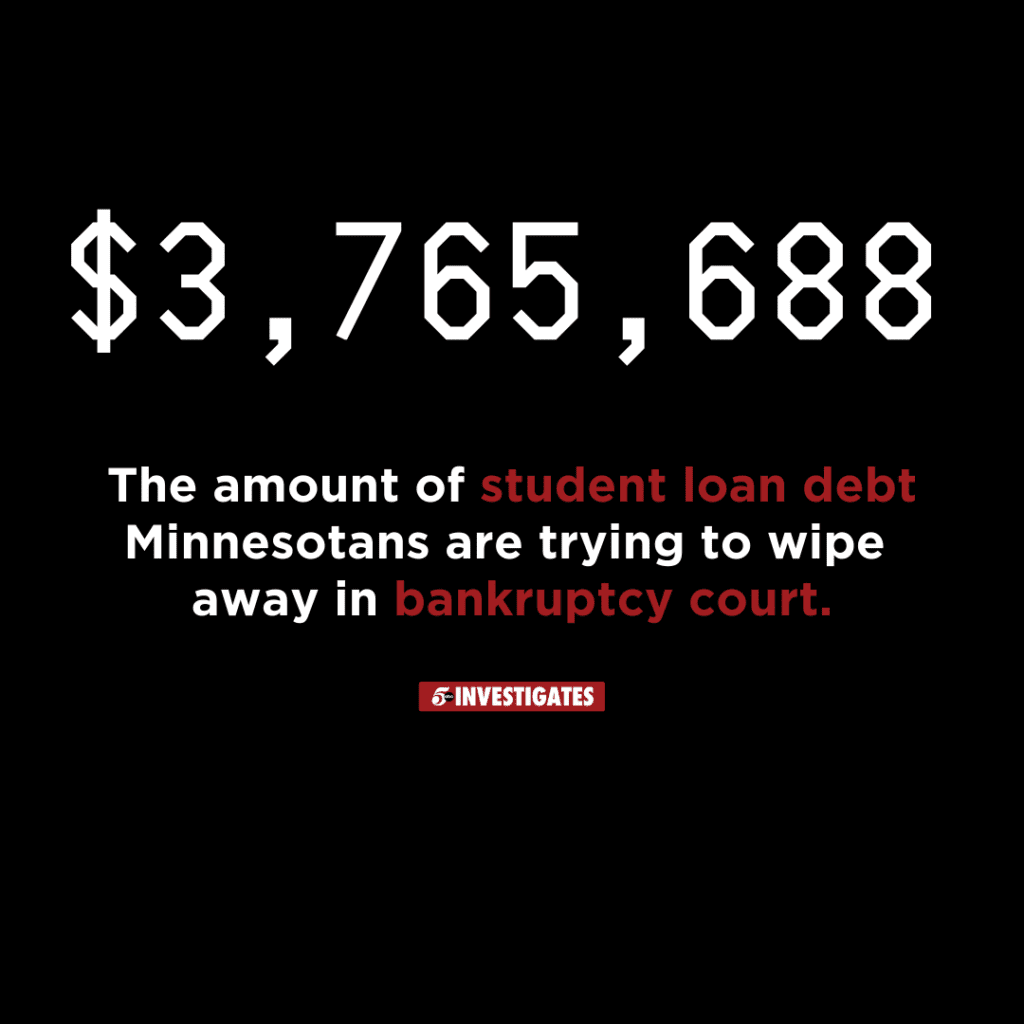For decades, filing for bankruptcy rarely helped with student loans. That’s changing.
As student loans come due after a three-year pause, a growing number of former students in Minnesota are finding relief for the first time ever by filing for bankruptcy.
For decades, bankruptcy rarely protected people overwhelmed with student loans. While thousands of dollars in other debt would disappear, student loans remained.
“I thought I would have that forever,” said Mike Fleck, who had $63,000 in student loans.
But Fleck’s debt was discharged this summer after he applied for an “undue hardship.”
In the past, meeting that bar was so difficult when it came to student loans that few even bothered trying.
“I get questions all the time, ‘What can I do about my student loan debt?’ Nothing in bankruptcy,” said Jeff Butwinick, Fleck’s attorney.
However, last November, the United States Department of Justice (DOJ) issued new guidance that makes it easier for students to offload their student loans in bankruptcy if they meet the following criteria:
- Prove they lack the ability to repay the loan.
- The inability to repay will likely persist in the future.
- Acted in good faith to repay the loan.
It was a “sea change” moment for desperate students, said longtime bankruptcy attorney Clint Cutler.

“Now the government is willing to consider these factors in a way that’s a little more informal and quite a bit less expensive,” he said.
Most in the country
5 INVESTIGATES reviewed bankruptcy records filed in Minnesota over the past year and found more than 40 applications for relief under the new guidance — the most in the country, according to the DOJ.
The records show the former students are trying to wipe away roughly $3.7 million in combined debt.
“I felt, you know, 20-some years of frustration being released,” said Butwinick.
Mike Fleck filed for Chapter 7 Bankruptcy protection in 2019 while caring for his sick wife.
“It was pretty painful. I felt like I was a terrible father, terrible husband,” he said.
He makes $16 an hour working as a security guard. His truck has 300,000 miles and a stubborn check engine light that won’t go off.
Filing for bankruptcy wiped away most of his debt — except for the student loans he took on while earning his business degree from Winona State in the 1980s.
“I still had the student loans and I knew it,” he said.
The shift in guidance last year opened a window to relief. After filling out a 15-page form detailing his monthly income and expenses, a judge wiped away a lifetime of debt with one signature this past August.
“It hasn’t really sunk in yet,” Fleck said.
Open window … for now
The window for relief may not stay open for long.
Neil Kraus, a political science professor at the University of Wisconsin-River Falls, says a Republican administration would likely reverse the DOJ guidance.
“It’s always struck me as a little odd that student loans were treated differently than other kinds of debt in terms of bankruptcy,” he said. “I think that we made a promise, in many respects, that we can’t really deliver. We can’t guarantee that anybody who gets a degree gets a middle-class, you know, secure job. Higher education can’t, just can’t do that.”
At the Bankruptcy Law Clinic at the University of Minnesota, student lawyers are trying to help clients take advantage of the sudden shift.
Cutler, a partner at Fredrickson and Byron, helps run the clinic and says bankruptcy may now be a last resort for students at a crucial time.
The Biden administration’s plan to forgive large chunks of student debt was struck down by the Supreme Court. Payments that were paused during the pandemic are now resuming.
“The type of clients that we work with are living paycheck to paycheck. And so they are not budgeting for having to make a student loan payment right now,” Cutler said.